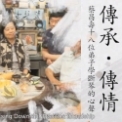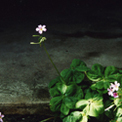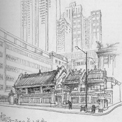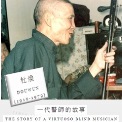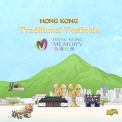-
History & Society
- Education in Pre-war Hong Kong
- History of Taikoo Sugar Refinery
- Hong Kong Products Exhibition
- Local Festivals Around the Year
- Post-war Industries
- Pre-war Industry
- The Hong Kong Jockey Club Archives
- Tin Hau Festival
- Memories We Share: Hong Kong in the 1960s and 1970s
- History in Miniature: The 150th Anniversary of Stamp Issuance in Hong Kong
- A Partnership with the People: KAAA and Post-war Agricultural Hong Kong
- The Oral Legacies (I) - Intangible Cultural Heritage of Hong Kong
- Hong Kong Currency
- Hong Kong, Benevolent City: Tung Wah and the Growth of Chinese Communities
- The Oral Legacies Series II: the Representative List of the Intangible Cultural Heritage of Hong Kong
- Braving the Storm: Hong Kong under Japanese Occupation
- A Century of Fashion: Hong Kong Cheongsam Story
Geography & EnvironmentArt & Culture- Calendar Posters of Kwan Wai-nung
- Festival of Hong Kong
- Ho Sau: Poetic Photography of Daily Life
- Hong Kong Cemetery
- Sketches by Kong Kai-ming
- The Culture of Bamboo Scaffolding
- The Legend of Silk and Wood: A Hong Kong Qin Story
- Journeys of Leung Ping Kwan
- From Soya Bean Milk To Pu'er Tea
- Applauding Hong Kong Pop Legend: Roman Tam
- 他 FASHION 傳奇 EDDIE LAU 她 IMAGE 百變 劉培基
- A Eulogy of Hong Kong Landscape in Painting: The Art of Huang Bore
- Imprint of the Heart: Artistic Journey of Huang Xinbo
- Porcelain and Painting
- A Voice for the Ages, a Master of his Art – A Tribute to Lam Kar Sing
- Memories of Renowned Lyricist: Richard Lam Chun Keung's Manuscripts
- Seal Carving in Lingnan
- Literary Giant - Jin Yong and Louis Cha
Communication & Media- Hong Kong Historical Postcards
- Shaw Brothers’ Movies
- Transcending Space and Time – Early Cinematic Experience of Hong Kong
- Remembrance of the Avant-Garde: Archival Camera Collection
- Down Memory Lane: Movie Theatres of the Olden Days
- 90 Years of Public Service Broadcasting in Hong Kong
- Multifarious Arrays of Weaponry in Hong Kong Cinema
-
History & SocietyGeography & EnvironmentArt & Culture
-
View Oral History RecordsFeatured StoriesAbout Hong Kong Voices
-
Hong Kong Memory
Introduction
Choi Chang-sau began handing down his art of qin making in 1993. His workshop serves as an important stronghold for research into Hong Kong’s qin studies. “Knowing how to play the qin” is a prerequisite to being one of Master Choi’s students. This is because he believes that without a passion for the qin, it is simply impossible to learn qin making well.
Over these past 50 years, Choi Chang-sau has repaired more than 100 qins, many of which have a history dating back more than one thousand years. Whenever the internal structure of the qin’s cavity belly is discussed, Choi shares his experience with his students and explores the variations of qin making with reference to the style of each respective period. To implement their teacher’s instructions, students experiment with materials according to records found in ancient literature. They also frequently form groups to look for ancient wood and lacquer materials. None of them is bothered by the potential allergy some people have to raw lacquer and everyone goes to the workshop every week to pick up his or her tools. They have one aim and that is to create a good qin for their own playing, and to carry on the tradition of qin players who have created their own instruments through the ages.
Choi Chang-sau teaches without discrimination. His students come from a variety of backgrounds, are of different ages, and have varied experience in qin making. The group comes together through their shared passion. Stories and views on the qin are discussed and shared among teachers, students and peers, with each member contributing their expertise. Thanks to these interactions, the art of qin making and its required skills are preserved and passed on in Hong Kong.
In a bid to be part of the qin making culture, to conduct research and to promote sharing of the techniques, Choi Chang-sau and his students formed the “Choi Chang Sau Qin Making Society” in 2011, with a mission to introduce the craft to the community and create a qin making culture in Hong Kong through academic exchange, organizing exhibitions and conducting promotion activities.
From its modest beginning as a musical instrument making class to becoming an institution, and from a small circle of qin players with a like-minded zeal to learn how to make qins to becoming a knowledge geared for the public, this cultural heritage has made itself unique in Hong Kong.
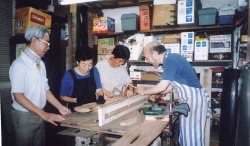
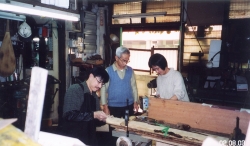
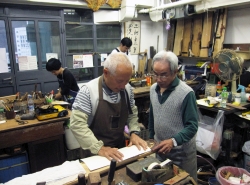
Qin making class in action at the workshopCopyright © 2012 Hong Kong Memory. All rights reserved.






